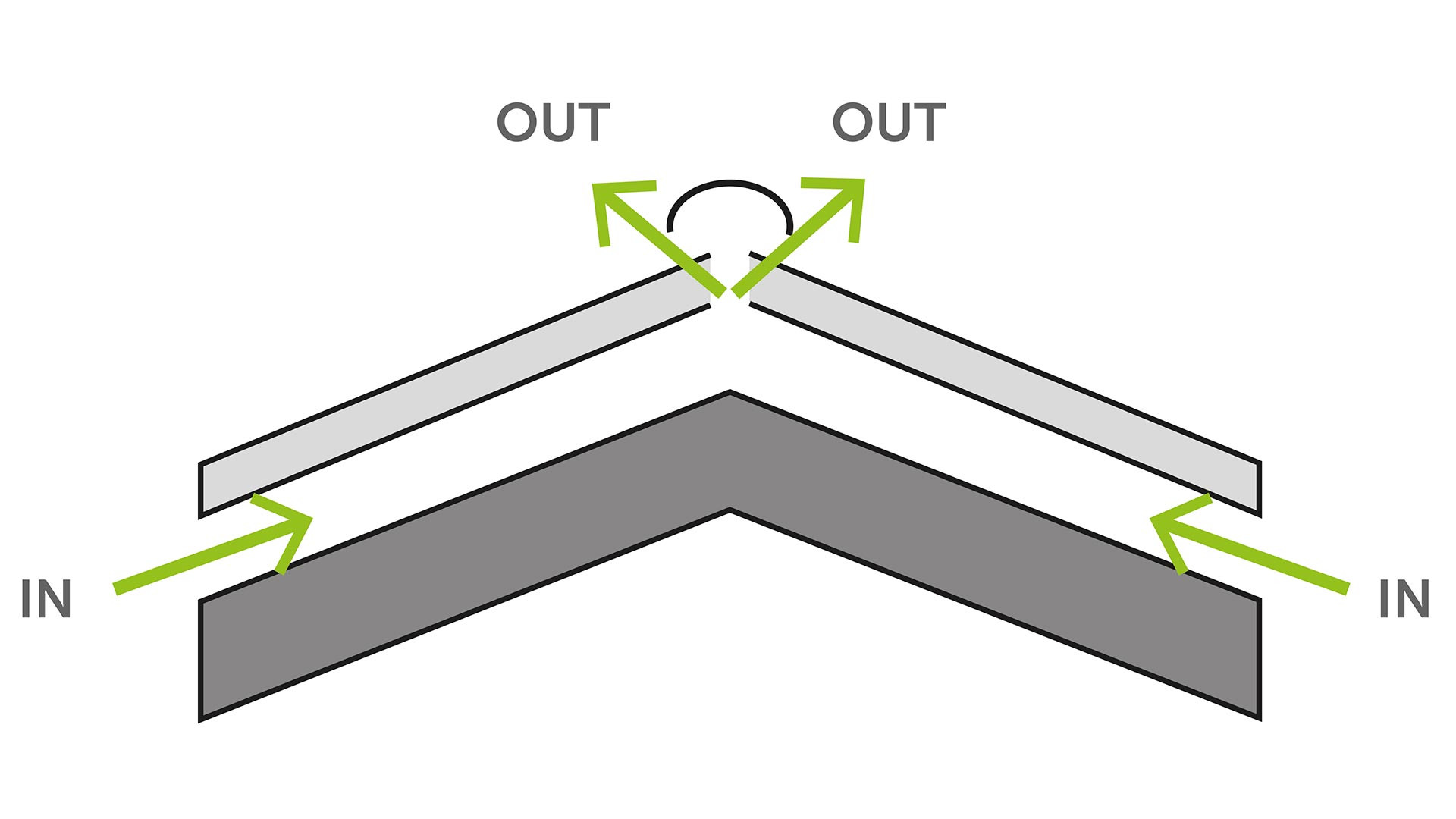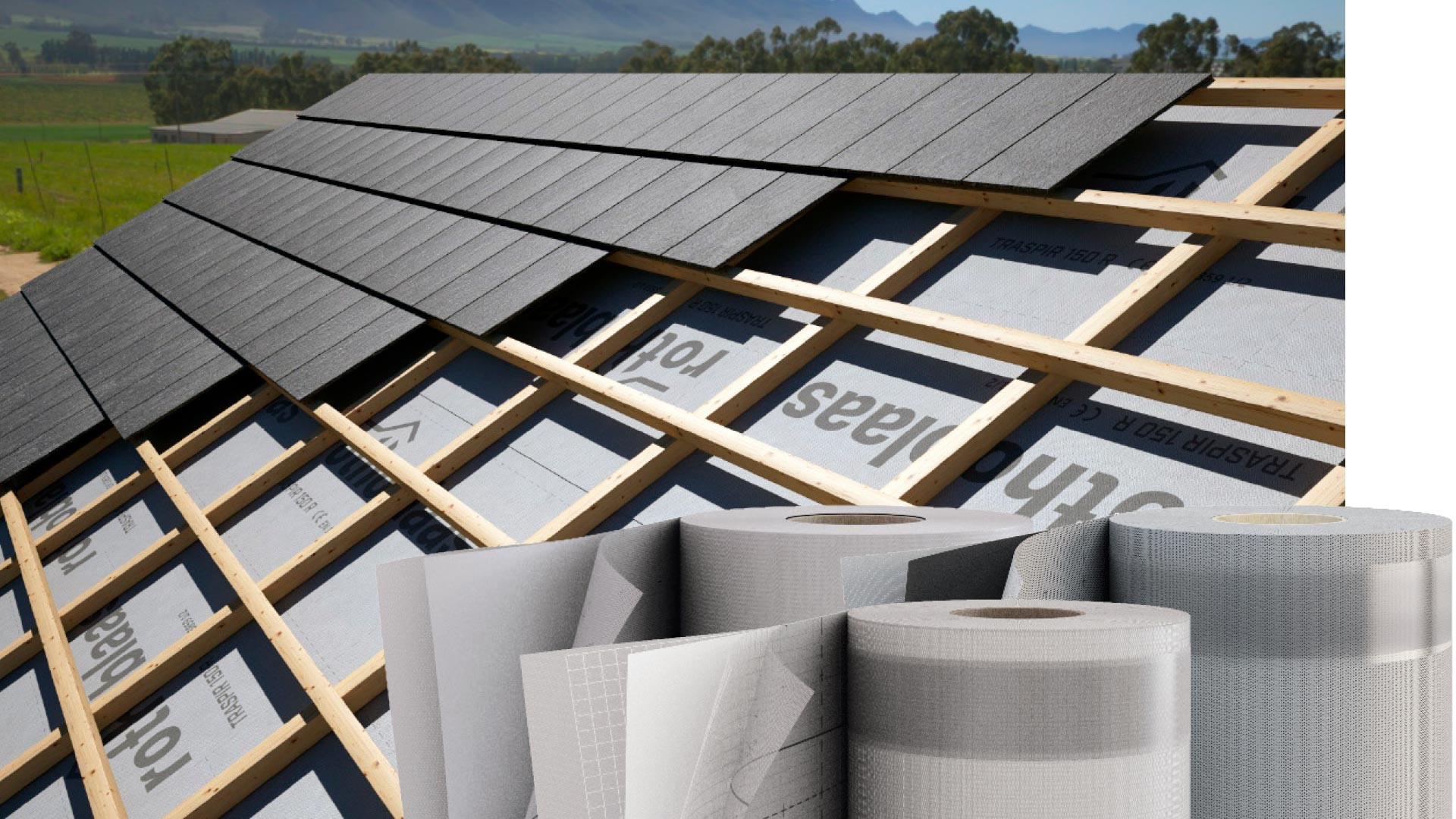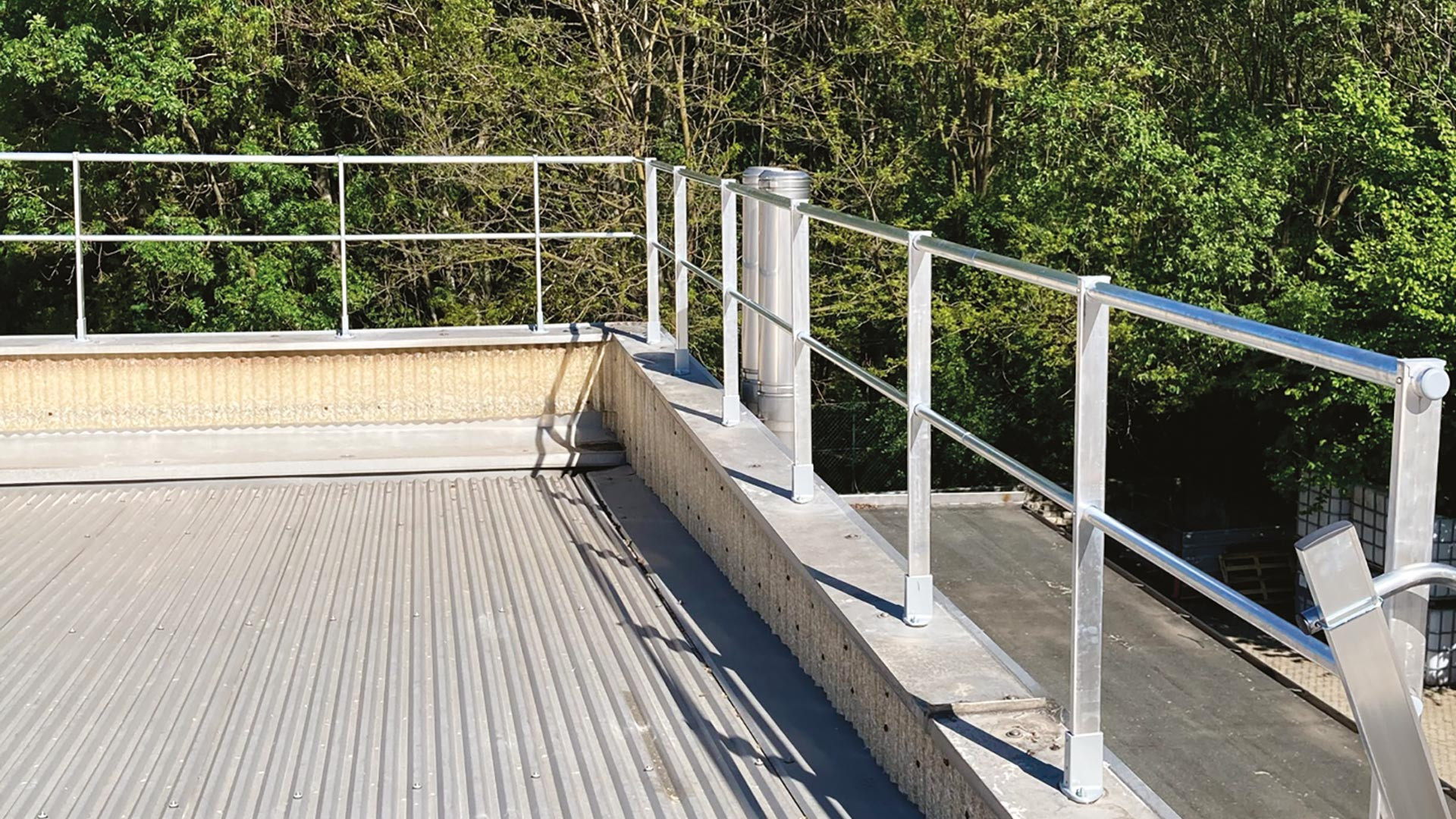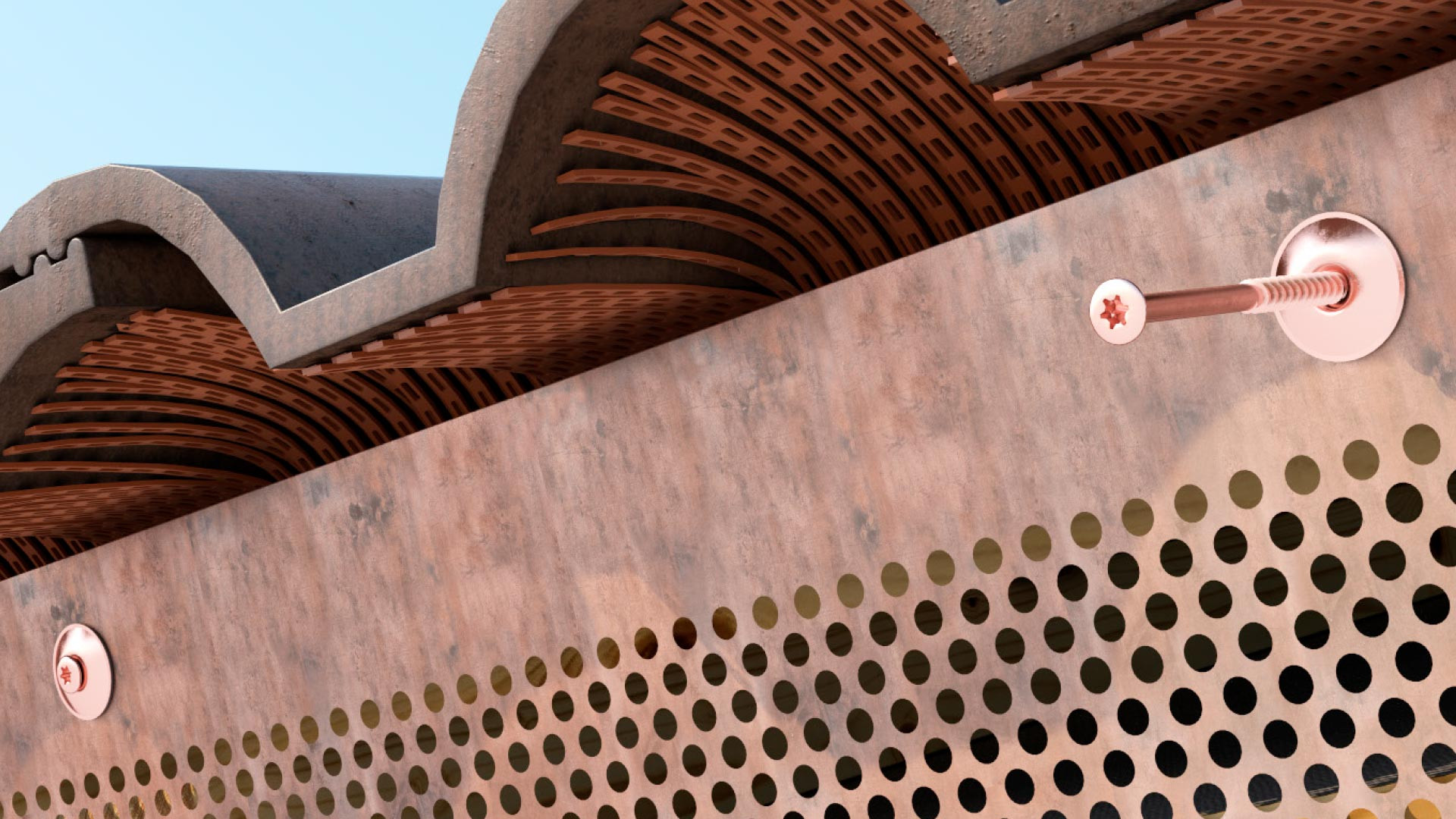ROOF ACCESSORIES: VENTILATION AND VENTILATION PROTECTION
There are many factors to take into account when designing and building a safe, healthful, and durable roof: ranging from the building tradition of the place where the roof is built, through the experience of the builder to the specific requirements of the client.
Good ventilation helps the water vapour inside the building envelope to dry, preventing the formation of interstitial condensation at the insulation of the structure. In winter, ventilation makes snow that may have accumulated on the roof to melt evenly, preventing it from slipping uncontrollably. During the warmer months, on the other hand, ventilation removes some of the thermal energy stored under the roof, contributing to improved housing comfort.
The ventilation layer offers additional protection in the event of accidental infiltration, as it creates a second layer of water flow and prevents water from stagnating, the small details then help us protect the air intake and exit points from the entry of insects, birds and obstacles (such as leaves) that could prevent the free circulation of air.
Good ventilation helps the water vapour inside the building envelope to dry, preventing the formation of interstitial condensation at the insulation of the structure. In winter, ventilation makes snow that may have accumulated on the roof to melt evenly, preventing it from slipping uncontrollably. During the warmer months, on the other hand, ventilation removes some of the thermal energy stored under the roof, contributing to improved housing comfort.
The ventilation layer offers additional protection in the event of accidental infiltration, as it creates a second layer of water flow and prevents water from stagnating, the small details then help us protect the air intake and exit points from the entry of insects, birds and obstacles (such as leaves) that could prevent the free circulation of air.

MICROPOROUS VS MONOLITHIC MEMBRANES
Microporous films are made from hydrophobic polymers, which are themselves incapable of interacting with water and are generally more rigid. They require special processing for water to pass through them, which makes them more susceptible to pollutants. The more sources of stress act simultaneously, the greater the degradation of polymers. If a microporous membrane is exposed to ultraviolet radiation, chemical stress is added to the mechanical stress.
Monolithic films are made from hydrophilic polymers, which are able to interact chemically with water and are generally more elastic. No mechanical or thermal stresses are created in the production process of monolithic films. Therefore, when a monolithic membrane is exposed to ultraviolet radiation, this is the only source of stress for the functional film and degradation is less than it would be for a microporous film. The UV resistance of monolithic membranes is generally higher.
Do you know the difference between monolithic and microporous membranes in terms of resistance to water penetration? If the answer is no, find it out in this video.
Monolithic films are made from hydrophilic polymers, which are able to interact chemically with water and are generally more elastic. No mechanical or thermal stresses are created in the production process of monolithic films. Therefore, when a monolithic membrane is exposed to ultraviolet radiation, this is the only source of stress for the functional film and degradation is less than it would be for a microporous film. The UV resistance of monolithic membranes is generally higher.
Do you know the difference between monolithic and microporous membranes in terms of resistance to water penetration? If the answer is no, find it out in this video.

COLLECTIVE PROTECTION
Collective Protective Equipment (CPE) are aimed at safeguarding people's health and safety and should be seen as a priority with respect to the the use of Personal Protective Equipment (PPE). There are different types of collective protection: permanent and temporary railings and permanent and temporary fall protection nets.
GUARD railings, for example, are versatile and adaptable to every design requirement: they are available in fixed and reclining versions. They are assembled in just a few steps, and offer multiple fastening options (vertical, horizontal, with Z-brackets, etc.) or even without drilling holes in the roof if the version with ballasts is chosen.
Rothoblaas' collective protection solutions are comprehensive and can certainly fit every need.
GUARD railings, for example, are versatile and adaptable to every design requirement: they are available in fixed and reclining versions. They are assembled in just a few steps, and offer multiple fastening options (vertical, horizontal, with Z-brackets, etc.) or even without drilling holes in the roof if the version with ballasts is chosen.
Rothoblaas' collective protection solutions are comprehensive and can certainly fit every need.

ROTHOBLAAS SCREWS
Very frequently, the Rothoblaas screw range features new and specific variants of some of the "historic" screws in the fastener line. In addition to softwood and hardwood screws, new features have been introduced for fastening metal plates such as the HBS PLATE EVO: EVO screws, an abbreviation for a special coating which allows for use in aggressive climates, such as marine coasts, or with aggressive tannin woods, such as oak and chestnut, or even wood that has been chemically treated with sealing agents or other such substances.
Rothoblaas has also significantly expanded its range of terrace and façade screws and now has the appropriate solution for all outdoor situations. The overall intention is to offer customers increasingly comprehensive solutions through the wide range for every size and weather, more specific, higher performance, and more durable
Rothoblaas has also significantly expanded its range of terrace and façade screws and now has the appropriate solution for all outdoor situations. The overall intention is to offer customers increasingly comprehensive solutions through the wide range for every size and weather, more specific, higher performance, and more durable





